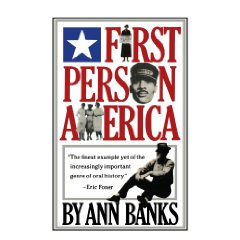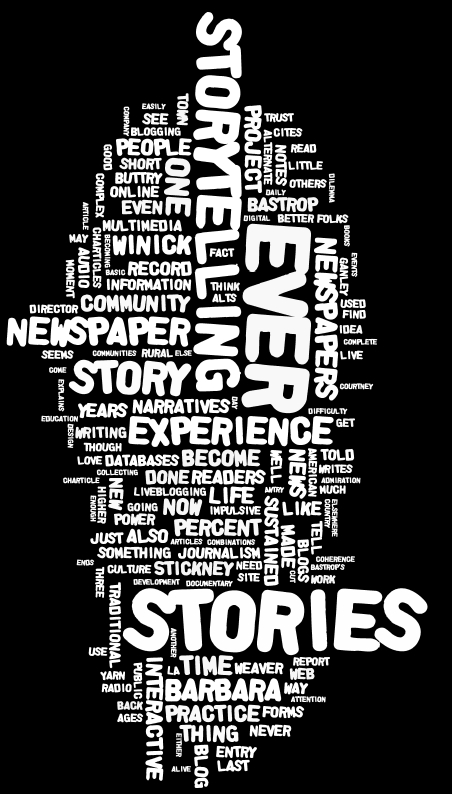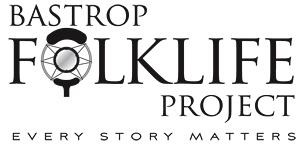Stumbled across this article on a free content site (content4reprint.com). I’m a little wary of the author, Melani Ward (pictured below), as she seems almost “anti-story.” In her Changing Your Story Blog, she calls herself a “storybuster.” To her, that means breaking through stories that keep people (especially women entrepreneurs) stuck. It’s not so different from my “change your story, change your life” philosophy. I present her guest article in the interest of offering diverse viewpoints:
Storytelling that Ruins Relationships: What Stories Are You Telling About Other People?
By Melani Ward
I love stories. I love reading them, listening to them, talking about them and creating them. But, for a long time, I used to use the stories I told about OTHER people to make me feel better. Crazy huh? Well it’s true. I was what I now call the quintessential “I’ve Got YOUR Story Straight” Storyteller.
Now I don’t necessarily want to go telling a story about you right now but I would bet that you have first hand knowledge of this storyteller.
This is the person who has your whole life figured out. She will tell you what you should do, how you should feel and what everything you say, think and feel means. You may hear something like this from this storyteller, “If you would just do ___________, you would be so much happier.”
These storytellers usually mean well, in fact I rarely meet any who don’t, it’s just that they have a hard time keeping their ideas to themselves and what they define as help more often than not comes across as patronizing and quite irritating actually. The truth is most of the time these people want to help you or “fix” your situation because if they do, it makes them feel better.
If you are the “I’ve Got You Story Straight” storyteller, you probably have some pretty good ideas about what the people in your life should be doing differently in order to be happier, healthier, fitter, or more likeable, right?
Well, here’s the deal — what you think doesn’t matter.
And to steal a phrase from one of my friends and a totally cool chick Marie Forleo, “nobody made you manager of the world.” It’s none of your business how someone else thinks, feels, or acts.
Let me give you a quick example. I had a friend many years ago who I loved very much but I was not the best at showing it. You see as far as I was concerned she made all of the wrong decisions when it came to men.
(As if I had it all figured out myself, right?) She would say she wanted one thing and then do something that made getting the thing she said she wanted virtually impossible. It drove me nutty and I used to have a whole bunch of advice I was more than happy to dole out, even when she never asked.
The story I was telling about her was that she was not happy or that she could be happy if she just chose a different path. But who was I to say if she was happy or not?
This person is the way she is because of the people who raised her, her environment and her experiences. And she can only be exactly as she is just as I can only be exactly as I am. It not only wasn’t fair of me to expect her to behave, think or feel differently, it also wasn’t fair of me to put that kind of energy on her. I was putting her somewhere (in unhappy land) that she didn’t deserve to be.
One of the challenges for me was that people would come to me a lot and ask me for my thoughts or opinions so I got used to it and decided that since they wanted it than everyone else must have wanted it too. Not true.
But, I truly learned to stop telling stories when I moved away from home. I love my dad very much but we did not have the world’s best relationship when I was growing up. It wasn’t that we ever fought or didn’t get along. It was just that I had such a hard time understanding him that it made it difficult to get close. However, when I moved away, the space gave me the freedom to let go of the stories I was telling about him. I realized that I was trying to do the impossible — understand what it was like to be him and therefore understand how he acted. But, I was never going to understand.
I’d never understand what it was like to go to work as a young kid to help support my family. I’d never understand what it was like to have to pay for everything in my life including college and graduate school. I’d never understand what it was like to have parents who did not support me and encourage me every minute of my life. And I most certainly could not understand what it was like to watch my 8-year-old daughter fight for her life every day for two and a half years.
But that was the whole trick — I wasn’t supposed to understand. I was just supposed to have compassion and let him BE. Once I did that, our relationship blossomed.
In letting go, I created an opportunity for what really mattered to flow in, which has been a gift for both of us.
The real lesson here is that it’s never our business to tell stories about anyone else.
So, the next time your mom starts lamenting her worries or your best friend starts complaining about her current loser boyfriend/husband or your brother complains about his lame job, just listen. Just open your heart and show compassion for wherever they happen to be at that moment. If they want advice, they’ll ask. You’ll be amazed at the results.
Find out what storyteller might be keeping you stuck at Changing Your Story Blog. Melani Ward is a multi-passionate entrepreneur: numerologist, marketer, lifestyle coach, writer, and athlete! She helps women entrepreneurs attract ideal clients and a lot of money doing work they LOVE.
 of Congress storage room, she spent a year sifting through 150,000 pages containing “thousands of interviews with ordinary Americans telling of how they survived the Great Depression.”
of Congress storage room, she spent a year sifting through 150,000 pages containing “thousands of interviews with ordinary Americans telling of how they survived the Great Depression.”








